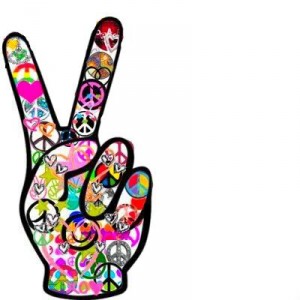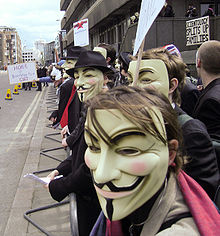Monday, March 31, 2014 8:35 pm
Roland Barthes is credited with developing semiotic theory, a concept which has influenced the realms of psychology, art history and criticism, and even approaches to education. Semiotics is concerned with ‘meaning-making,’ where the signifier (a sign) refers to the signified (its meaning).
A classic example of semiotics can be found in the word DOG. Depending on one’s context and experience, the signifier DOG may mean:
1. Your beloved childhood pet
2. The annoying furball whose barks keep you up at night.
3. The animal that bit you.
Meaning is thus subjective to each individual and informed by context and experience.
1. 2.
2.  3.
3. 
Monday, March 31, 2014 6:30 pm
Semiotics, according to Roland Barthes, is the “the analysis of anything that can stand for something else”. The signs can be classified as the “signifier” or the physical form that can be interpreted through our senses and the “signified” or what we make of the sign. Semiotic techniques are largely used in advertising. Consider the company Bud Light and the close association it has with the National Football League. Budweiser has positioned itself in the market as the beer you drink when watching football. The signifier is the product or the beer itself. Through marketing techniques, such as the design of the can, the signified message is that Bug Light is the beer you drink when watching football. During the NFL season, Budweiser intentionally redesigns its can to ensure their consumer drinks their beer during football games.

Monday, March 31, 2014 4:43 am
Roland Barthes defines Semiotics as an “adventure” that “interprets both verbal and nonverbal signs”, in other words, the analysis of any object, sign, or symbol that would potentially stand for something else (332). One example of a symbol that is applicable to the idea of semiotics, is the heart. This symbol can be viewed in terms of both the “signifier” (the physical form of the symbol) as well as the “signified” (the meaning we associate with the symbol). Looking at the heart symbol from the perspective of an individual who has never been exposed or informed of its deeper meaning, this symbol would appear as a mere combination of curved lines, otherwise known as the signifier. To most other people, however, this symbol conveys a level of love and affection, which can also be viewed as the signified. When used in a text message the heart symbol could be intended to express admiration. It can be interpreted as deep love or playful love, and how it is interpreted depends on both the interpreter as well as the individual who originally used the symbol. This symbol relates to semiotics not only because it requires interpretation, but also because it often “stands for something else”.

Monday, March 31, 2014 4:28 am
Semiotics involves verbal and nonverbal signs. Roland Barthes explains that it is essentially the study of social production of meaning through signs. An example of this is seen in The Hunger Games. In this world, there is a District 12 sign that is part of their culture and understood by their community. It is usually used at a funeral to demonstrate their care and thanks. Katniss uses the sign to salute the death of Rue who is from District 11. By using this sign it demonstrates her devotion to Rue and leads to this very powerful scene in the following link.
The Hunger Games
Monday, March 31, 2014 3:35 am
In his writings on semiotics, Roland Barthes defines the signifier and signified as important elements in human communication. With signs, humans can experience shared meaning through a silent language experienced visually or physically. For individuals inside of a group of shared understanding, the signifier, or sign, can be understood to mean what it is intended to signify. Otherwise, the people outside of the group may be confused about what the signifier is intended to signify. For example, in professional golf, caddies will flail their arms in the air making an X trying to inform the player that their ball has landed in a place that is playable. For a random passerby, or someone who does not understand golf, this could be read as a sign of panic, or perhaps even to run away.
Monday, March 31, 2014 3:35 am
Roland Barthes describes semiotics as an “adventure” that “interprets both verbal and nonverbal signs” (332). Further, he claims that semiotics is “concerned with anything that can stand for something else (332). Such signs may seem straightforward but actually communicate subtle ideological meanings as well as perpetuate societal values. Barthes further explains that signs are a combination of a “signifier,” which is the “physical form of the sign perceived through our senses,” and the “signified,” which is the “meaning we associate with the sign” (333). When applying Barthes’ view on semiotics to our world today, I believe that semiotics are everywhere. A common example of such social production of meaning through signs can be seen in everyday objects such as the American Flag. When breaking down the flag, the signifier, or physical form, are the alternating red and white lines of cloth as well as the 50 stars that have been sewn on the blue backdrop in the upper-left corner. For someone who has never seen an American Flag before, the image perceived may be the only thing about the flag that they see. However, for Americans, there is also the signified, or the meaning associated with the sign. In this case, the signified is a range of things, spanning from “country” to “freedom” to “pride,” “sacrifice,” and on and on. Thereby, for people who share a signified response to the American Flag, destructive acts such as flag-burning are extremely offensive and will likely provoke hateful response. However, for those who do not seen the signified aspect of the flag, and therefore do not view the combined image representing “America,” such flag-burning may not be viewed as offensive. This disparity clearly depicts how a sign must be a combination of signifier and signified in order to contain social meaning. I have attached an image of the American Flag below, and wonder what signified meanings the image carries for you, the reader.

What signified meaning does the flag have for you?
Monday, March 31, 2014 3:08 am
In Roland Barthes chapter on semiotics he defines it as the study of social production of meaning from sign systems; the analysis of anything that can stand for something else. Semiotics is the use of both verbal and nonverbal signs. When using semiotics a sign must use a signifier and a signified. A signifier is the physical form of the sign as we perceive it through our senses. Signified is the meaning we associate with the sign. An example of this would be someone showing a “V sign” or a “peace sign” with their hands. The signifier is the physical act of someone stick up their index and middle finger and parting them and lowering the other three fingers. The signified is what the sign actually means; when someone uses this hand sign it can stand for victory or for peace.
Monday, March 31, 2014 2:55 am
Semiotics states that we have symbols that have meanings in culture. These symbols can be seen all over the world across different communities or can be specific to certain population of people. Some of these symbols can even change through time as we popular culture changes. One symbol that is fairly specific to America is giving someone the “middle ginger.” Too many people around the world this would be seen as a curious gesture and would not be seen as offensive in any way but in our culture today it is considered so offensive that it can not even be shown on television. This is something that we have assigned to this gesture. It is not overtly rude or threatening in any way but when we see it we no we are offended and that it is inappropriate to show this type of emotion in public. This does not seem to be a natural motion or one that we would use unless we saw how it was used in public. Also, it has become more popular recently. This is not something that was seen in the past as a popular way of expressing emotion. In the future it will probably be replaced and if giving the gesture to someone will be seen as an odd thing to do 
Monday, March 31, 2014 2:54 am
According to Roland Barthes, semiology is a subject that concern with any matter that stands for another meaning. This idea is separated as signifier and signified. Signifier is the image that leads to a deeper meaning, and the signified is the concept that the interpreter receives from viewing the signifier. The text also talks about how sign does not exist on its own but rather it is a part of a larger system. Regardless of the diversity of signs, semiotic is interpreted and functioned through the same procedure. Such analysis of the semiotic system is called taxonomy. The Guy Fawks Mask, also known as the mask portrays in V for Vendetta, is a global signifier for revolution and democracy. It is currently used by the people in Thailand as a sign to overthrow the corrupted government system. Moreover, it was also used during the Occupy Wall Street protest and the Occupy London Stock exchange protest to raise awareness about the social and economic inequality. Thus, in this context, the mask is the signifier, and the signified is the concept of revolution and justice.

Monday, March 31, 2014 2:11 am
According to French semiologist Roland Barthes, semiotics deals with “anything that can stand for something else” (332). Barthes first defined his theory as an explanation of myth. A myth is a connotative meaning that signs carry wherever they go. He later replaced the term myth with connotation, which is considered to be a better word choice to express his belief. Barthes thinks that semiotics interprets verbal and nonverbal signs. He primarily focuses on nonverbal signs, which are made up of the signifier, the physical form of the sign as we perceive it through our senses, and the signified, the meaning we associate with the sign. For example, a sign that we often see is the thumbs up. When we give someone the “thumbs up”, it is usually in a good context. The signifier would be a person making a fist with their thumb sticking straight up. We associate a thumbs up with things like approval, praise, agreement, or telling someone that you understand them. These associations would be the signified.













